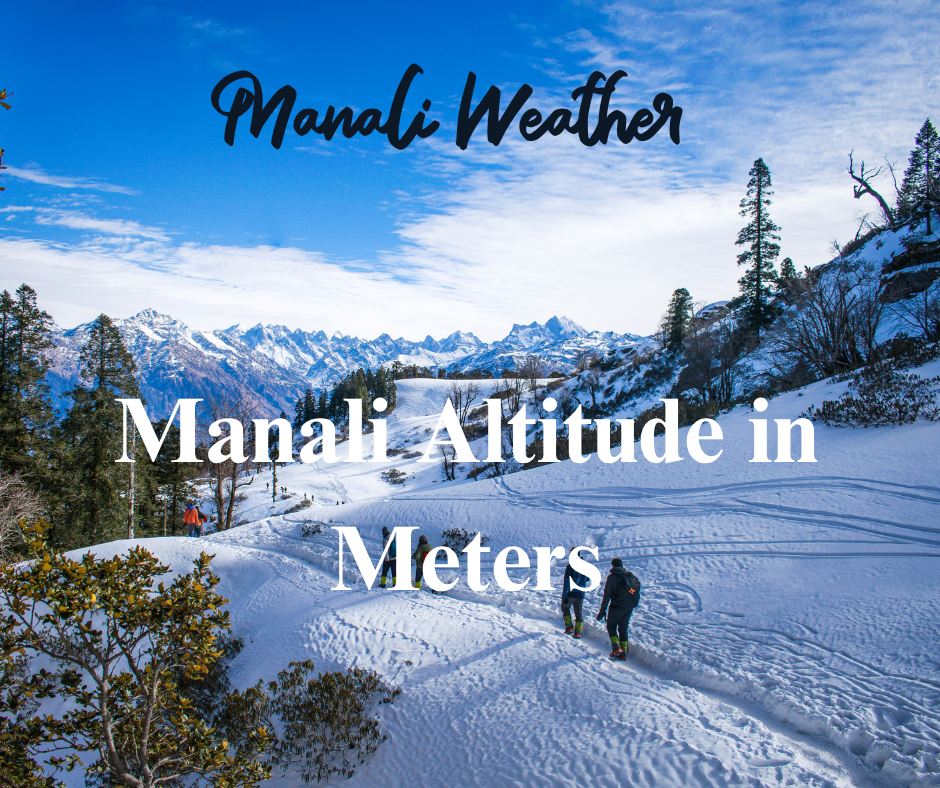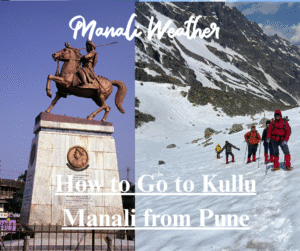Manali Altitude in Meters

Manali Altitude in Meters – Everything You Need to Know
Located in the majestic Himalayas, Manali is one of the most visited hill stations in India. A question often asked by travelers and trekkers alike is: What is the altitude of Manali in meters? Understanding this is crucial not just for curiosity, but also for planning your trip, knowing the weather patterns, and preparing for high-altitude travel.

What is the Altitude of Manali in Meters?
The altitude of Manali is approximately 2,050 meters (6,726 feet) above sea level. This Manali Altitude in Meters elevation places it in the category of moderately high-altitude destinations. Unlike high-altitude zones like Leh or Spiti, Manali’s height is more suitable for first-time mountain travelers, families, Manali Altitude in Meters and even senior tourists.
Why Altitude Matters for Travelers?
Knowing the Manali altitude in meters helps in:
-
Understanding the weather conditions year-round
-
Preparing for temperature changes due to elevation
-
Avoiding altitude sickness, especially for those coming from sea-level cities
-
Planning acclimatization if you’re heading to higher altitudes like Rohtang Pass or Leh
-
Packing correctly with appropriate clothes and medication
Weather Conditions at Manali’s Altitude
Manali Altitude in Meters Because of its 2050 meters elevation, Manali experiences a cold mountain climate for most of the year. Manali Altitude in Meters Here’s how the altitude impacts its weather:
-
Winters (November to February): Expect sub-zero temperatures and snowfall.
-
Summers (March to June): Pleasant weather with temperatures ranging between 10°C to 25°C.
-
Monsoon (July to September): Rainfall is moderate to heavy, often making roads slippery.
-
Autumn (October): Cool, dry and one of the best times to visit.
How Manali’s Elevation Affects Health
At 2,050 meters, most people won’t experience serious altitude sickness, but some might feel:
-
Mild headache
-
Dizziness
-
Nausea
-
Shortness of breath during steep treks or climbs
Manali Altitude in Meters To stay safe:
-
Hydrate often
-
Avoid heavy physical exertion in the first 24 hours
-
Eat light but energy-rich meals
-
Carry altitude sickness medication if heading to Rohtang or above
Manali Altitude vs. Other Hill Stations
Here’s a comparison of Manali’s height in meters with other popular tourist spots:
| Location | Altitude (meters) |
|---|---|
| Manali | 2,050 m |
| Shimla | 2,276 m |
| Dharamshala | 1,457 m |
| Mussoorie | 2,005 m |
| Leh (Ladakh) | 3,524 m |
| Rohtang Pass | 3,978 m |
As you can see, Manali is higher than Dharamshala and Mussoorie, but not as extreme as Leh or Rohtang.
Trekking and Adventure at Manali’s Elevation
The altitude of Manali in meters makes it a perfect base for many high-altitude treks. Here are some popular ones:
-
Hampta Pass Trek (4,270 m): Starts from Manali
-
Bhrigu Lake Trek (4,300 m): Easy to moderate trek
-
Beas Kund Trek (3,700 m): Short and beginner-friendly
-
Jogini Falls Trek (2,500 m): Just above Manali elevation, great for day hike
Make sure to spend a day in Manali before attempting these treks to let your body adjust to the altitude.
Manali Altitude in Meters How to Reach Manali – Elevation Considerations
Reaching Manali involves gaining significant altitude from nearby cities:
-
From Delhi (216 m): 12-14 hour road trip or overnight bus
-
From Chandigarh (321 m): 7-8 hour journey by car or bus
-
By Air: Nearest airport is in Bhuntar (1,100 m), then 50 km drive to Manali
-
By Train: No direct rail; nearest station is Joginder Nagar
The altitude difference between the plains and Manali can sometimes cause mild discomfort for people who ascend too quickly—especially in overnight trips.
FAQs about Manali Altitude
1. What is the altitude of Old Manali vs. New Manali?
Old Manali is slightly higher, around 2,100 meters, while New Manali is closer to 2,050 meters.
2. Is altitude sickness common in Manali?
Not common, but a few visitors may feel light-headedness. It’s much less intense than higher-altitude destinations like Leh.
3. Does altitude affect oxygen levels in Manali?
Yes, the oxygen level is slightly lower than sea level, but most people adjust quickly.
Travel Tips Based on Altitude
-
Start slow: Allow a few hours of rest upon arrival.
-
Dress in layers: The temperature changes quickly with elevation.
-
Stay hydrated: Dry mountain air can dehydrate you faster.
-
Avoid alcohol on Day 1: It can worsen altitude-related symptoms.
-
Use sunscreen: Higher altitudes mean stronger UV exposure.
Conclusion: Why Manali’s Altitude is Ideal
Manali’s altitude of 2,050 meters strikes the perfect balance—it’s high enough to offer snowy winters, cool summers, and lush valleys, but not so high as to create serious health concerns. Whether you’re visiting for adventure sports, honeymoon, or just a peaceful retreat, understanding Manali’s elevation will help you travel smarter and safer.
Bungee Jumping in Manali | Manali Snowfall 2025





1 thought on “Manali Altitude in Meters”